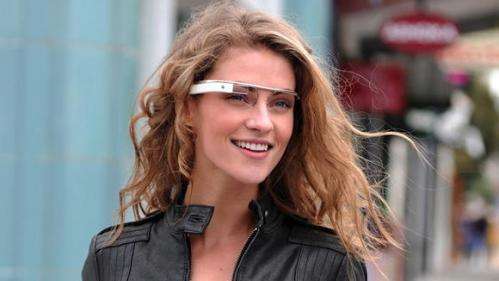Google Glass test an eye-opening experience

In the past month, Google has been handing out the first editions of its much-anticipated Glass wearable computer devices to a select group that was chosen to be the first to try it out. One of them was avid bicyclist and science-fiction writer Margo Rowder, who was invited to pick up the high-tech eyewear at a Google office in Los Angeles. All those selected to buy the glasses must pick them up at a Google office and go through what some say feels like a Google initiation.
Rowder allowed me to tag along and experience the whole process with her. She applied to receive an invitation to the Google Glass Explorer program in February, telling Google she was interested in using the device to help her get around Los Angeles on her bike.
In her application, Rowder said Glass could make it easier for her to record any thoughts that came to her that would be useful for the book she was writing called "Thirty Decibels," which is about a futuristic society in which most people are forbidden from speaking any louder than a whisper. Rowder said she was very excited to receive her invitation to purchase the $1,500 glasses because in her book, which she began writing in 2009, she imagined a device that's very similar to what Google has made.
Riding on her blue Raleigh hybrid bike, Rowder pulled up Wednesday afternoon to Google's offices in Venice, located inside the Binoculars Building designed in the 1980s by famed architect Frank Gehry. Inside we were greeted by half a dozen Google employees, all wearing the glasses.
After Rowder finished putting on her contacts (you can't wear prescription eyeglasses with Glass) we were escorted to the Glass team's wing of the building. Along the way, we got an inside peek at what employees have access to, including a Google L.A.-imprinted burgundy pool table, a large snack room and an open courtyard with a life-size chess board.
The Glass team's room looked like an Apple store that had been converted into a theater dressing room with vanity mirrors. On one side were counters with numerous glasses in various colors, and on the other were vanity tables with black bags labeled with the Glass logo. Google's staffers offered drinks and hors d'oeuvres.
Rowder had no interest in the white, black or gray glasses and instead focused on those that were in orange (tangerine) and blue (sky).
Glass is essentially made up of five parts: a titanium frame, two nose pads that hold up the frame, a counterweight on the back right side of the glasses, a toothbrush-like device that doubles as a touch pad and a glass cube, which houses the tiny screen.
Once she picked out her color, Rowder was taken to one of the vanity tables, where she was presented with an encyclopedia-sized white box. She opened the box slowly, hoping to take in the full experience like a tech geek unboxing a new device. Once she got to the Glass, she lifted the device and examined it before putting on her very own head-mounted display for the first time.
Pat, a Google Glass team member, asked Rowder how the device felt before giving her tips on the proper way to wear it: The frame should sit straight across her brows and once she turns it on, she should be able to see the screen in the glass unimpeded.
Another Glass staffer asked whether I would like to try on the device.
After putting it on and turning it on, I had to tap the touch pad on the main device (quickly tilting your head 30 degrees also works) to bring up a floating screen with a transparent "OK Glass" written across it. It was like looking through a heads-up display on a fighter jet.
Along with "OK Glass," the see-through screen displayed the time of day. The display of "OK Glass" signaled that I could give it commands.
"OK, Glass, take a picture," I instructed, and the device snapped a photo, which I could see immediately on my display screen.
With the touch pad, I could scroll the screen left or right using a finger. Scrolling to the left displayed various information, including weather. Scrolling to the right, I found the picture I had just taken.
After a few minutes, my eyes were beginning to strain - I felt a little bit overwhelmed by the new technology - so I took it off and handed it back to the staffers.
I rejoined Rowder as Pat helped her set up the smartphone app that works with Glass, check out the website where she can adjust Glass' settings, and add Glass apps (or Glassware, as they are officially called). Rowder tried out all Glass' functions, shooting video of us, searching images of actress Julia Roberts and sending her first Glass-written text message.
"Hi Mom I'm talking to you from Glass. What do you think!?" Rowder said aloud, including specifying the punctuation, which Glass transcribed, turned to text and sent to her mother.
After about half an hour spent setting up the device, Rowder was finally good to go. The Glass team walked us out and gave her as much information as they could before we said our goodbyes, like parents sending their daughter off to college for the first time.
Outside, Rowder popped on the sun visors that came with Glass, put on her helmet and hopped on her bike. For a moment she seemed in an odd daydream-like state as she tried to get the Glass to give her directions.
I told my colleagues about this weird condition that must surely happen to all Glass users as they scroll through their devices looking for information. We came up with a term for it: "Glass-eyed."
©2013 Los Angeles Times
Distributed by MCT Information Services




















